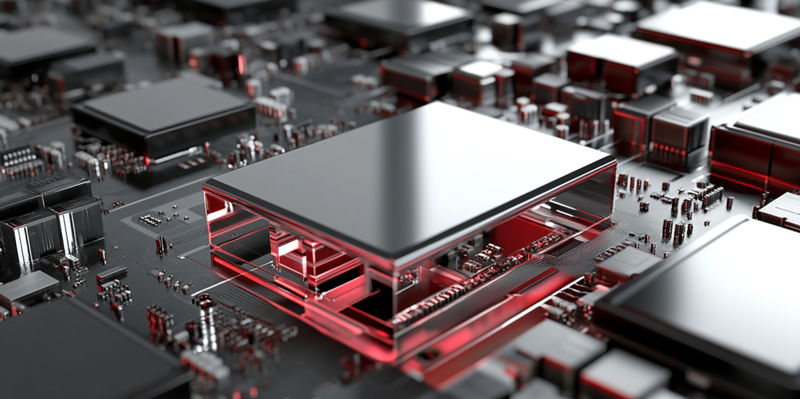Recent leaks and confirmations from supply chain sources suggest that AMD’s next-generation Ryzen APUs and Threadripper CPUs will feature the highly anticipated 3D V-Cache technology. This innovation, which brought monumental improvements in gaming and productivity performance with the Ryzen 9000X3D chips, is expected to be further extended across AMD’s diverse product range, including high-performance workstations and versatile mobile platforms. This development marks a significant evolution in computing performance, promising richer user experiences across various applications.
Expanding 3D V-Cache Technology to Threadripper
Confirmation from Supply Chain Sources
Supply chain sources have confirmed that AMD is preparing to integrate the 3D V-Cache technology into their upcoming Threadripper processors. This move is set to usher in a new era of performance enhancements for high-demand applications. The 3D V-Cache technology, which debuted with the Ryzen 9000X3D series, provided a breakthrough in both gaming and productivity. The same technological advancements are now expected to benefit users of AMD’s powerful Threadripper CPUs, known for their exceptional multi-threading capabilities and performance-hungry applications.
The supply chain leak indicates that next-gen AMD Threadripper CPUs, namely the 9000WX/X series, will feature an expanded L3 cache across all available CCDs (Compute Complex Dies). In contrast to the desktop processors, where only a single CCD benefits from the 3D V-Cache, this new configuration will enhance performance significantly. Such an approach mimics the design found in AMD’s EPYC server processors, which also leverage multiple CCDs with larger caches for optimized computational tasks. By incorporating 3D V-Cache across all CCDs, AMD aims to boost the overall efficiency and speed of their Threadripper CPUs, making them even more relevant for workstation applications that demand peak performance.
Implications for Workstations
The integration of 3D V-Cache technology in AMD’s Threadripper CPUs signifies a substantial leap forward in processing power for workstations. Traditionally, Threadripper processors have been the go-to choice for content creators, engineers, and developers who require maximum computational power for tasks such as video rendering, 3D modeling, and complex simulations. The addition of 3D V-Cache is set to improve clock speeds and significantly enhance productivity performance by integrating a more substantial cache with the CPU cores. This efficient cache management will result in faster data retrieval and processing, essential for maintaining smooth and responsive workstation environments.
Furthermore, the elevated L3 cache is expected to minimize latency issues, a common bottleneck in data-intensive tasks. By ensuring quicker access to frequently used data, the 3D V-Cache will streamline operations, facilitating more efficient workflows. As a result, professionals using workstation applications will likely experience fewer interruptions and faster completion times. This update reflects AMD’s strategic move to push the boundaries of what high-performance CPUs can achieve, thereby reinforcing its standing in the workstation market.
Speculation Around AMD Mobile Processors
Potential Benefits for Future Mobile Chips
Though the first generation of ‘Strix Halo’ mobile chips will not feature 3D V-Cache technology, there is speculation that future AMD mobile processors might eventually benefit from this innovation. The integration of 3D V-Cache into mobile processors could bring about a significant performance uplift in portable computing devices, aligning more closely with desktop-level capabilities. By addressing the typical limitations of mobile processors, such as thermal constraints and power efficiency, this technology could introduce a new standard for high-performance mobile computing.
The potential benefits extend beyond merely improving processing speeds. Enhanced cache memory integration would result in more efficient data management, reducing the time required for data transfer and processing tasks. Such advancements could translate into longer battery life and cooler operating temperatures, key factors for the usability and longevity of mobile devices. Overall, incorporating 3D V-Cache technology into mobile platforms will likely result in devices that can handle more intensive applications, from gaming to professional software, without compromising on efficiency or user experience.
AMD’s Long-Term Strategy
Recent leaks and confirmations from supply chain sources indicate that AMD’s upcoming Ryzen APUs and Threadripper CPUs will be integrated with the much-anticipated 3D V-Cache technology. This advanced technology, which dramatically improved gaming and productivity performance in the Ryzen 9000X3D series, is set to be extended across a wide array of AMD products. This includes not only high-performance workstations but also flexible and efficient mobile platforms.
The introduction of 3D V-Cache has already demonstrated substantial gains in computing performance, making it a highly desirable feature for both gaming enthusiasts and professionals who rely on powerful processing capabilities. The continued expansion of this technology in AMD’s next-generation processors is expected to bring even greater enhancements in user experience across various applications. With these advancements, AMD aims to deliver unprecedented performance improvements, ensuring that their CPUs and APUs remain competitive in the rapidly evolving tech landscape.

